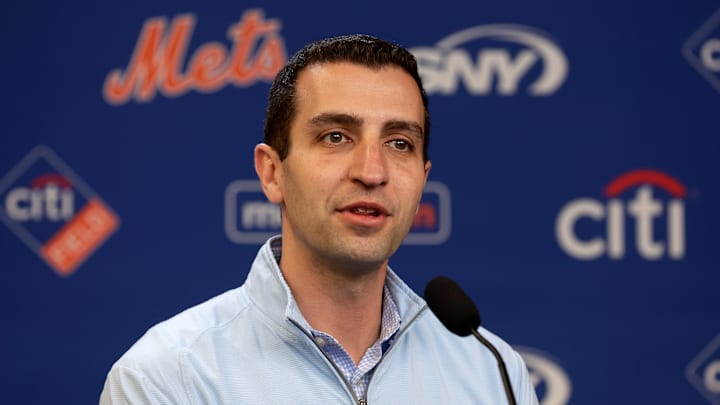The New York Mets have left some fans scratching their heads this offseason. While the acquisition of Juan Soto certainly injected excitement into the fanbase because of his batting profile, track record, age, and experience, a lingering concern persists.
The offseason's moves suggest that the acquisition of Juan Soto was primarily driven by owner Steve Cohen, rather than President of Baseball Operations David Stearns. Stearns' other transactions indicate a focus on fielding a competitive team in the upcoming season, but not necessarily one poised to win a championship.
David Stearns appears to be operating with a small-market mentality aside for the Juan Soto contract
Stearns' strategy looks a lot like a reminiscent of his time with the Milwaukee Brewers, rather than leveraging the Mets' resources to build a championship-caliber team. Mets' front office approach, while potentially setting the stage for a sustainable future, leaves glaring holes on the roster that could hinder their World Series aspirations in the immediate future.
The most prominent area of concern is the starting rotation. Stearns has assembled a collection of arms with significant question marks, a strategy that feels like a high-risk experiment. While there's potential for some of these pitchers to outperform expectations, concerns about Kodai Senga's health and consistency, doubt over whether Sean Manaea can replicate his 2024 and the Clay Holmes experiment are some worrying aspects.
Following the historic acquisition of Juan Soto, World Series contention is the expected outcome. Despite a near miss in the previous season's playoffs, the Mets should have prioritized acquiring a proven, elite starter to bolster their rotation, rather than relying on reclamation projects and unproven pitchers. This patchwork approach feels like a risky gamble given the team's theoretically open championship window.
Beyond the rotation, the lineup, while potent with Soto in the mix, doesn't look significantly improved from last year. While some moves have been made, the core of the batting order remains largely the same.
Understandably, Stearns is aiming for financial flexibility and a sustainable future. Some of the moves, viewed in isolation, make sense from a long-term perspective. However, the Mets are not the Milwaukee Brewers. They have the resources to be aggressive, pursue top-tier talent, and build a team that can compete for a championship every year.
Ultimately, the concern is that the Mets are caught between two worlds. They have the financial capacity to be big spenders, but they're being run with a cautious approach that prioritizes long-term sustainability over immediate contention. While building a sustainable future is crucial, the Mets have glaring holes that need to be addressed if they want to truly compete for a World Series title. As it stands, the team feels like it's missing key pieces, and fans have a right to question whether this current strategy is the right one to bring a championship back to Queens.
